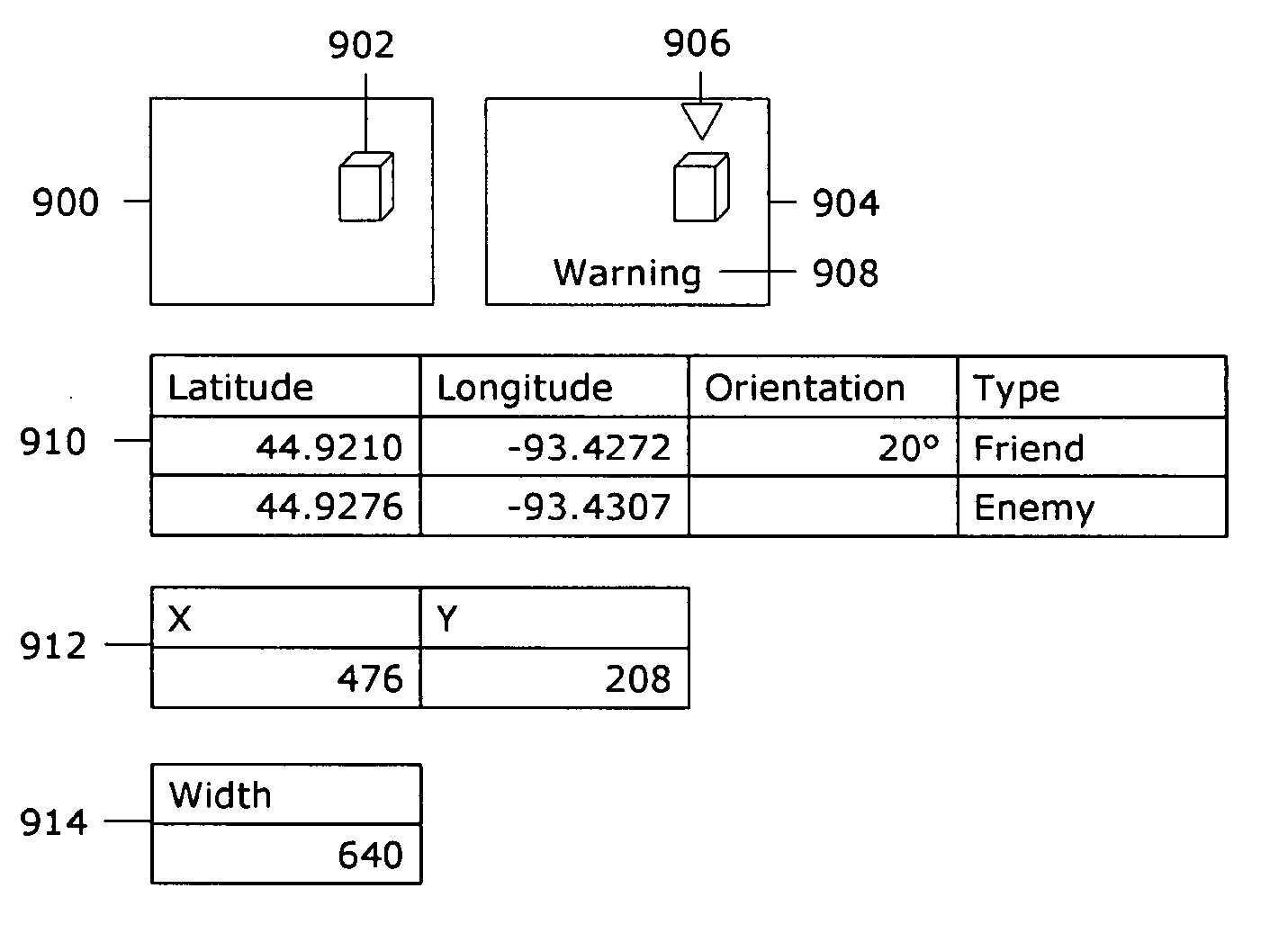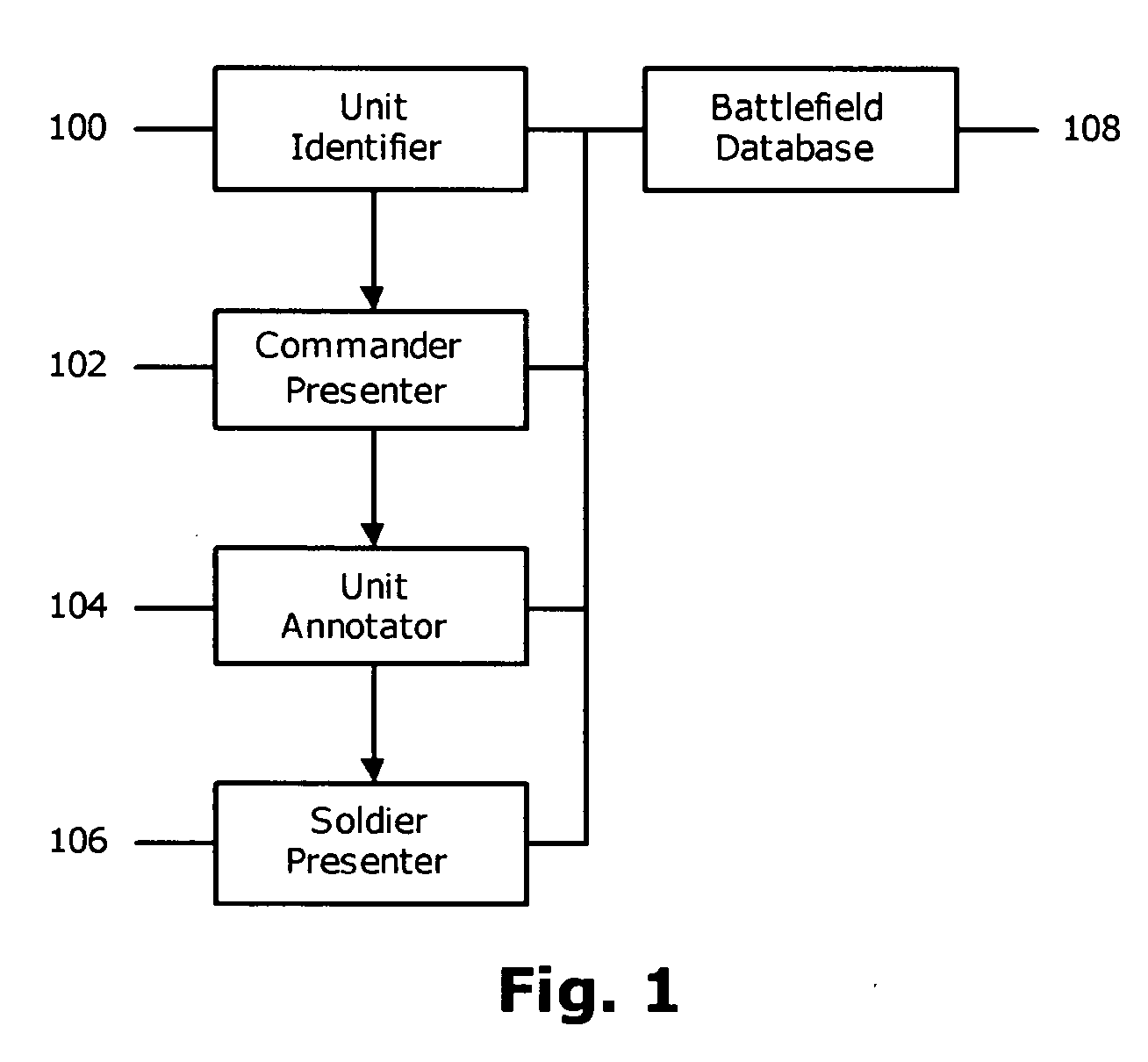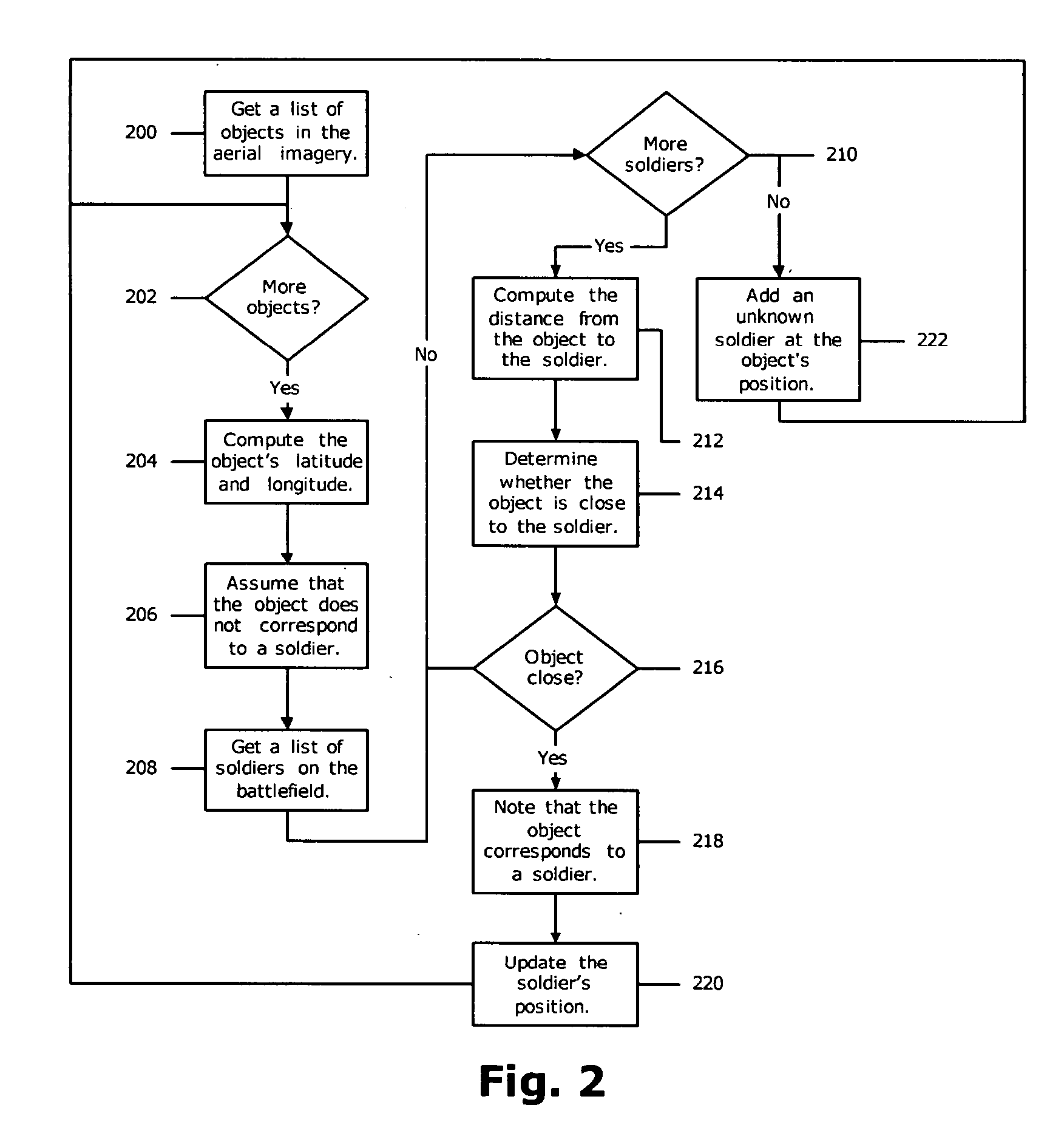Indicating positions of and directions to battlefield entities in a soldier's head-mounted display
- Summary
- Abstract
- Description
- Claims
- Application Information
AI Technical Summary
Benefits of technology
Problems solved by technology
Method used
Image
Examples
Embodiment Construction
[0059]FIG. 1 shows a preferred embodiment of the present invention. The processing is performed by four components. The Unit Identifier 100 associates objects detected in aerial imagery with soldiers on the battlefield. The Commander Presenter 102 displays the aerial imagery and overlays symbols representing the soldiers. The Unit Annotator 104 enables commanders to tag soldiers as friend, foe, or neutral. The Soldier Presenter 106 identifies units that appear in a soldier's head-mounted display.
[0060] Each of the components has access to the Battlefield Database 108. The Battlefield Database 108 contains the position, name, orientation, rank, and type of each soldier. In addition, the Battlefield Database 108 contains aerial imagery of the battlefield and scope video captured by weapon-mounted cameras carried by soldiers. To perform line-of-sight analysis, the Battlefield Database 108 includes a standard Geographic Information System (GIS) such as MapInfo™ by ESRI, Inc. of Redland...
PUM
 Login to View More
Login to View More Abstract
Description
Claims
Application Information
 Login to View More
Login to View More - R&D
- Intellectual Property
- Life Sciences
- Materials
- Tech Scout
- Unparalleled Data Quality
- Higher Quality Content
- 60% Fewer Hallucinations
Browse by: Latest US Patents, China's latest patents, Technical Efficacy Thesaurus, Application Domain, Technology Topic, Popular Technical Reports.
© 2025 PatSnap. All rights reserved.Legal|Privacy policy|Modern Slavery Act Transparency Statement|Sitemap|About US| Contact US: help@patsnap.com



